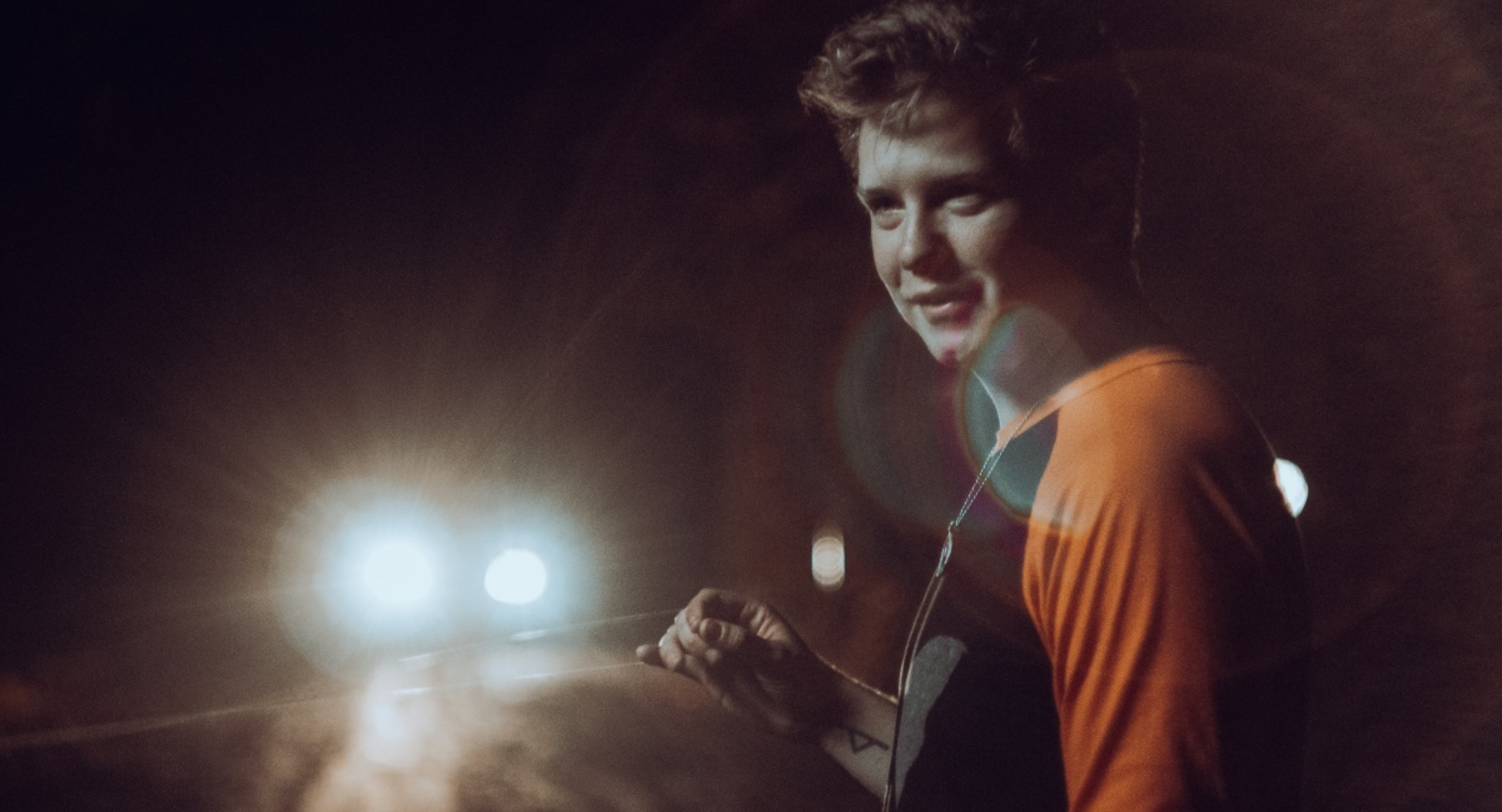Creeping Death – Film Review
Published September 14, 2024

Matt Sampere‘s Creeping Death offers an intriguing premise, drawing upon Celtic mythology to infuse its supernatural horror narrative. The idea of an ancient spirit being unleashed on Halloween night, terrorizing a group of unwitting teens, has all the potential to be a thrilling horror ride. However, despite moments of eerie atmosphere and genuine tension, the film ultimately falls short due to a combination of underdeveloped characters, predictable plot beats, and inconsistent pacing. This leads to a viewing experience that, while not without its merits, fails to fully capitalize on the promise of its concept.
Creeping Death centers on Tim Garner (Matt Sampere), whose mother (Monique Parent as Linda Garner) is battling brain cancer, a subplot that provides a surprisingly tender emotional undercurrent to the film. However, the emotional gravity of Linda’s illness feels underexplored and secondary despite its potential to add depth to Tim’s motivations and actions.
The narrative takes a drastic turn when Tim’s group of friends unwittingly unleashes the Celtic Aos Si spirit on Halloween night after stealing a mysterious sack. The spirit, portrayed with unsettling menace by Alex Maxson, begins its pursuit, offering plenty of opportunities for horror set-pieces. Unfortunately, the plot unfolds in a predictable manner, relying heavily on horror clichés: the cursed object, the gradual realization of danger, and the inevitable thinning of the friend group as the spirit picks them off.
The mythology behind the Aos Si spirit is intriguing, but the film never fully explores it. There are vague hints at ancient traditions and the consequences of trespassing on sacred ground, but the script doesn’t delve deep enough into the lore to make the spirit feel as formidable or terrifying as it should. Instead, the audience is left with a surface-level understanding of the entity, which weakens its impact as the primary antagonist.
The film’s protagonist is a well-meaning but ultimately passive character. His mother’s illness is clearly meant to anchor him in an emotional struggle, but the film doesn’t take the time to let this connection breathe. As a result, Tim’s character feels underdeveloped, and Matt Sampere’s performance, while serviceable, doesn’t bring enough complexity to elevate him beyond the standard horror lead.
Tim’s friends—Danielle Wes (Delian Lincourt) and Nate (Hunter Kohl)—suffer from similar issues. Both characters fall into familiar archetypes: the supportive friend (Danielle) and the skeptical troublemaker (Nate). They have their moments of banter, but the script does little to distinguish them from the countless other horror movie sidekicks we’ve seen before. The film tries to generate camaraderie among the group, but the relationships feel more functional than genuine, lacking the emotional weight needed for the audience to truly invest in their fates.
The standout performance comes from Monique Parent as Linda Garner. Though her screen time is limited, she imbues Linda with a quiet strength that contrasts nicely with the chaos unfolding around her. Her presence adds a layer of pathos, but as mentioned earlier, the script doesn’t give enough attention to the dynamic between her and Tim, which feels like a missed opportunity for the film to explore a more meaningful emotional core.
Alex Maxson’s portrayal of the Aos Si spirit is visually striking, yet the character’s motivation remains muddled throughout the film. Maxson does a solid job conveying menace through physicality, but without clearer backstory or depth, the spirit becomes just another supernatural force that hunts indiscriminately.
Where Creeping Death excels is in its atmospheric tension. The Halloween night setting, with its dimly lit streets, flickering jack-o’-lanterns, and abandoned rural houses, provides an eerie backdrop for the film’s events. The cinematography captures a sense of claustrophobia and isolation, especially as the group becomes more desperate to escape the Aos Si. The spirit’s appearance—shrouded in mist, emerging from the darkness—is visually effective, utilizing practical effects that give it an otherworldly presence.
However, the film’s budget limitations become apparent in some of the more action-heavy sequences. Several of the chase scenes, which should have been pulse-pounding, feel disjointed due to awkward editing and pacing. Additionally, while the Aos Si’s design is commendable, its sporadic appearances rob it of the chance to truly terrorize. There is an over-reliance on jump scares, which undermines the atmosphere the film works hard to build.
The use of Celtic mythology is a nice touch, setting the film apart from more conventional ghost or demon stories. But the lack of depth in exploring this mythology feels like another missed opportunity. The Aos Si is more than just a spirit seeking revenge—it carries the weight of ancient tradition, and the film hints at this but doesn’t give the audience enough context to fully appreciate the stakes.
Creeping Death struggles with pacing, particularly in its second act. The initial setup is strong—establishing Tim’s relationship with his mother, the group of friends, and the accidental release of the spirit. However, once the Aos Si begins its hunt, the film shifts into a repetitive cycle of chase, hide, and confront. The tension starts to wear thin, and the narrative doesn’t introduce enough new elements to keep the momentum going.
The film’s final act, while offering a few surprising moments, feels rushed. After a slow buildup, the resolution comes quickly, leaving little room for the audience to fully grasp the consequences of the characters’ actions. The emotional stakes, particularly concerning Tim and his mother, are left dangling without proper closure, which detracts from the film’s overall impact.
Creeping Death had the potential to stand out in the crowded horror genre, especially with its use of Celtic mythology and a premise that could have explored themes of loss, guilt, and tradition. Unfortunately, the film falters in its execution, offering a series of familiar horror beats without adding enough of its own voice. While there are moments of effective tension and atmosphere, the underdeveloped characters, lack of deep mythology, and pacing issues keep it from being anything more than an average horror experience.
